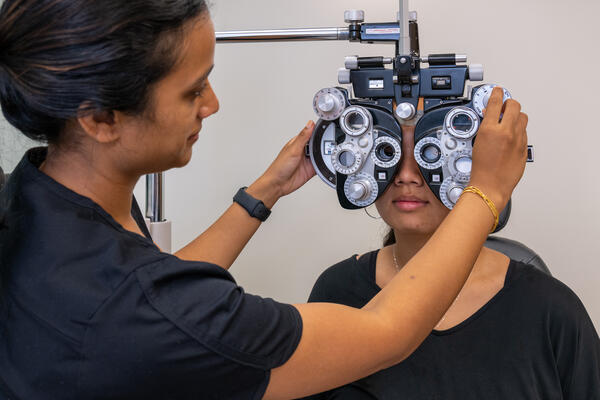The Pros and Cons of Different Refractive Surgical Treatments for Boosted Eyecare

LASIK Surgical Procedure
LASIK surgical treatment is a frequently carried out refractive procedure that aims to remedy vision issues such as nearsightedness, astigmatism, and farsightedness. Throughout the treatment, a slim flap is developed on the cornea, and a laser is used to improve the underlying tissue, remedying the refractive mistake.
One of the primary advantages of LASIK surgery is the quick renovation in vision experienced by lots of people. Many individuals see a considerable improvement in their eyesight shortly after the treatment, with marginal downtime required for healing. Furthermore, LASIK is recognized for its high success rate and reduced occurrence of difficulties when carried out by skilled cosmetic surgeons. Nevertheless, like any kind of operation, LASIK likewise brings some dangers, consisting of completely dry eyes, glare, halos, and under or overcorrection of vision. It is important for individuals thinking about LASIK surgical treatment to undertake a thorough assessment by an eye treatment professional to figure out if they are suitable prospects for the procedure.
PRK Treatment
The PRK treatment, also understood as Photorefractive Keratectomy, is a sort of refractive surgical treatment that intends to deal with vision problems similar to LASIK surgical procedure. Unlike LASIK, which involves creating a flap in the cornea, PRK deals with the surface area layer of the cornea. During the PRK procedure, the external layer of the cornea, called the epithelium, is removed to permit improving of the underlying corneal cells with an excimer laser. This improving aids to deal with refractive errors such as astigmatism, farsightedness, and nearsightedness.
One of the benefits of PRK over LASIK is that it removes the threat of flap-related complications considering that no flap is produced throughout the surgical treatment. Regardless of the longer recovery duration, PRK can be a suitable option for people seeking vision adjustment surgical treatment.
SMILE Surgical Procedure
A cutting-edge refractive surgical procedure strategy acquiring appeal in the field of ophthalmology is SMILE Surgery. Tiny Laceration Lenticule Extraction (SMILE) is a minimally intrusive treatment that fixes vision by reshaping the cornea using a femtosecond laser. Unlike typical LASIK surgery, SMILE Surgical procedure entails straight from the source developing a tiny cut in the cornea to remove a lenticule, which causes much less disruption to the corneal framework and possibly quicker recuperation times.
One of the main advantages of SMILE Surgical procedure is its capability to deal with myopia (nearsightedness) and astigmatism with high precision, bring about excellent aesthetic end results for patients. The minimally intrusive nature of the procedure likewise decreases the risk of complications such as dry eye syndrome, making it a favorable option for individuals looking for refractive surgery.

LASEK Method
Having actually checked out the benefits and factors to consider of SMILE Surgical procedure, another notable refractive surgical treatment method worth checking out is the LASEK Strategy. LASEK, which stands for Laser-Assisted Subepithelial Keratectomy, is a form of laser eye surgery that aims to remedy refractive mistakes such as nearsightedness (nearsightedness), hyperopia (farsightedness), and astigmatism.
Unlike LASIK, LASEK does not entail producing a corneal flap. Rather, during a LASEK treatment, the cosmetic surgeon uses a watered down alcohol service to loosen the slim external layer of the cornea, recognized as the epithelium.
One of the key advantages of LASEK is that it can be appropriate for people with thin corneas that may not be excellent prospects for LASIK. Furthermore, LASEK usually leads to marginal post-operative discomfort and a quicker recovery time compared to PRK. Nevertheless, the visual healing process with LASEK might be somewhat longer than with website here LASIK.
Implantable Call Lenses
Implantable Call Lenses provide a long-lasting vision adjustment option for people looking for an alternative to traditional get in touch with lenses or glasses. These lenses, also called phakic intraocular lenses, are surgically placed right into the eye to remedy refractive mistakes such as myopia (nearsightedness), hyperopia (farsightedness), and astigmatism. cardiologist andalusia. Unlike typical get in touch with lenses that remain on the surface of the eye, implantable call lenses work within the eye itself, providing clear vision without the demand for day-to-day maintenance or removal
One of the key benefits of implantable call lenses is their durability. Once inserted, they can continue to be in the eye forever, using consistent and stable vision adjustment. In addition, these lenses can be a superb option for people who are bad prospects for laser eye surgical treatment or who prefer a relatively easy to fix vision adjustment treatment.
Nevertheless, implantable contact lenses do bring some threats, consisting of the possibility for cataracts discover here or raised eye stress. It is essential for individuals considering this choice to seek advice from with an eye care expert to establish if implantable get in touch with lenses are the right choice for their certain requirements and eye health and wellness.
Final Thought
In final thought, each type of refractive surgery has its own advantages and drawbacks. LASIK surgery is popular for its quick healing time, while PRK treatment might be ideal for clients with thin corneas.

Overall, SMILE Surgical treatment presents an encouraging option for people looking to improve their vision with refractive surgical procedure.